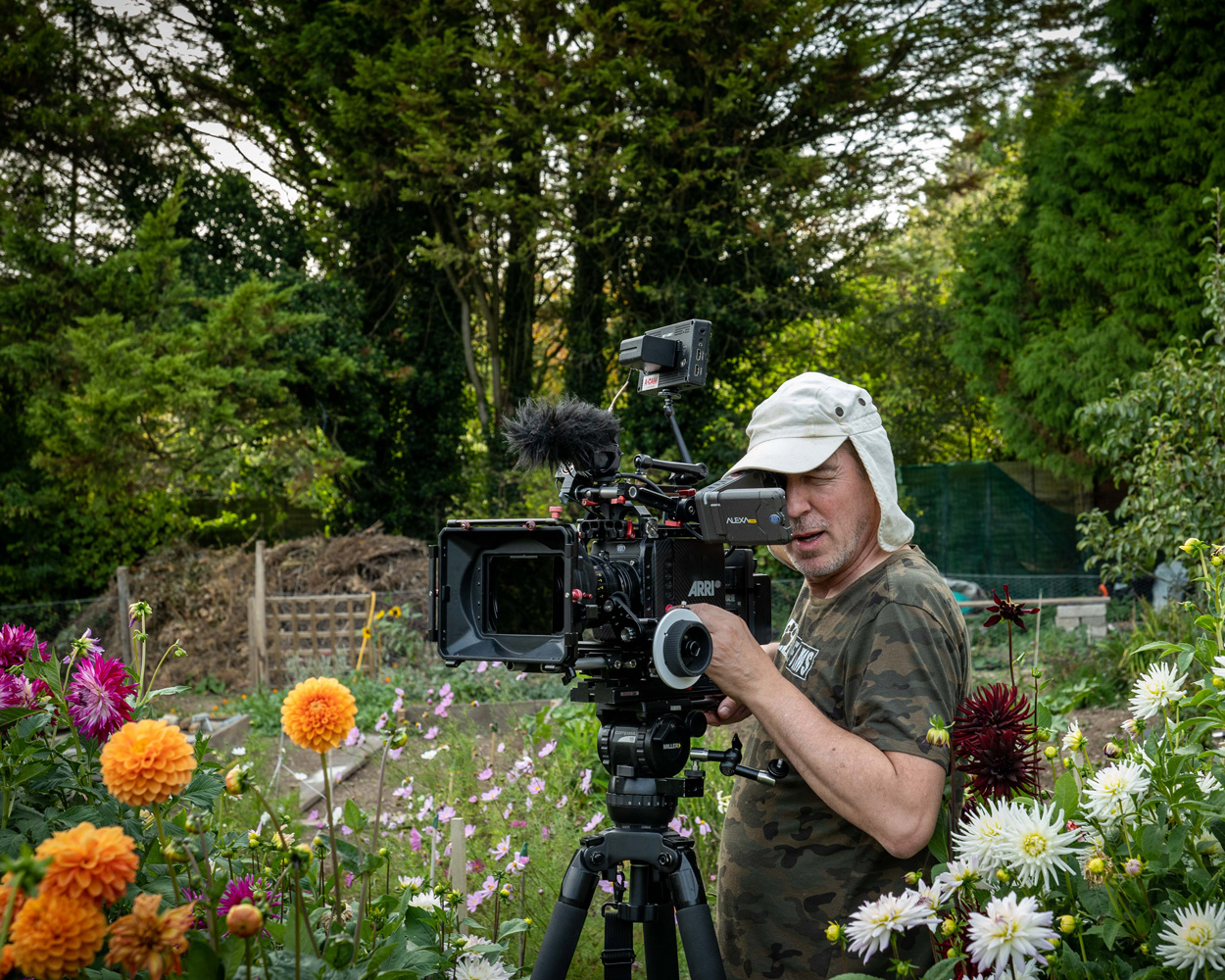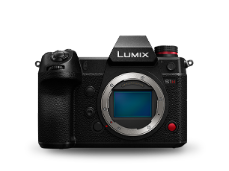
How does the LUMIX S1H compare to an industry-leading cinema camera? LUMIX Ambassador Nick Driftwood, who likes putting gear to the test, wanted to find out. In his project A Colour Story, he compared the LUMIX S1H to the Arri Alexa Mini, probably one of the most widely used cameras in Hollywood and broadcasting today. ‘I was impressed by how well they integrated with each other.’ It’s no wonder that the LUMIX S1H is the first mirrorless camera to be approved for filming by the Netflix Post Technology Alliance.
‘A Colour Story started out as an idea to see how the LUMIX S1H integrated with the Arri Alexa Mini. I wanted to see how well the S1H works alongside other cameras in the film industry. I specifically chose the Arri to see how it would blend with a different colour science. The Arri is currently the industry leader in cinema filmmaking. I simply wanted to cut between cameras for the best take or look in the edit rather than because it was filmed on either the Arri or S1H. In other words: I didn't want this video to become a “mine is better than yours” comparison film. After all, the cameras are in two different categories when it comes to price. Nevertheless, I was impressed by how efficiently they integrated with each other.’
Driftwood shot a film about a little boy and his mother for A Colour Story. He and a small crew filmed for three days at the end of the summer, switching between the two cameras. ‘We used them side by side or shot different parts of the same scene with both cameras. I wielded the Lumix S1H and my assistant cameraman had the Arri. We took turns using each camera for different scenes: that way we could reduce any margin of error. Then, in post-production I cut between the two cameras, using the best take in the final edit. I didn't want to worry about prioritising either the S1H or Arri – it was all about getting the best take – similar to what you do in real scenarios.’
Driftwood has a vision of what makes a great camera: functionality, form factor, design and grip, features and intuitiveness. The S1H ticks all the boxes. Strong points are, for example, its Full Frame Sensor, Dual Native ISO settings in VLOG, a base ISO at 640 ISO (daylight) and 4000 ISO (low light), and wonderful colour science with 6K recording abilities. ‘To get the best out of the sensor, I decided to shoot in Apple Pro Res Raw on an external monitor recorder. For the Arri Alexa mini, I used Apple Pro Res HQ (High Quality).’
‘During pre-production we used the ACES pipeline and we’d developed an IDT (Input Device Transform) and a grading LUT (Look up Table) for each camera that was pretty close to how it would look in the post-production timeline in Apple Final Cut Pro. ACES stands for Academy Colour Encoding System; it manages the entire colour process in filmmaking, from image capture, editing, VFX, and presentation, to archiving, and future remastering. In the digital workflow, ACES simply makes it easier to manage different cameras and devices under one hood. It’s widely used by Hollywood studios everywhere.’ I developed a number of LUTs. Like the Arri, the S1H has the ability to load LUTs in-camera to give a fairly decent representation of how it’s going to finally look in the montage.
‘It’s just as easy in post-production. I used the Colour Finale Pro plugin for the ACES input and output transforms inside FCPX and I could visualise the timeline scenes’ brightness using the scopes set for each output device. With the FCPX plugin Colour Finale Pro I didn't need to use Davinci Resolve or another colour grading package – I could do it all within FCPX, as it supports ACES. It’s primary colour control and floating layer panel are similar to other grading packages. You can control exposure, contrast, pivot, temperature, tint, saturation, and sharpness, and copy-and-paste settings from one clip to another. I can also create masks for specific areas of the image across frames.’
‘While editing our film we were impressed by how easily footage from both cameras could be intercut without any significant differences. I’m happy to say that in A Colour Story the S1H worked seamlessly with the Arri during the filming, in post-production and in the end result. If professional filmmakers or studios ask me whether the LUMIX S1H could be used to shoot their next feature film, I can honestly say “Yes, I can show you footage of them working together in perfect harmony”.’

Nick Driftwood
Nick Driftwood is a broadcaster, filmmaker, actor, artist and technologist based in Brighton, England. In 2009 he switched from big cameras to the new DSLR & DSLM revolution. In 2011, he developed some camera settings for the Lumix GH2 that were used in the BAFTA award-winning cinematography documentary called ‘The Great Zacuto Shootout’. Legendary director Francis Ford Coppola proclaimed the GH2 with Driftwood’s Quantum 9B settings his favorite look in this empirical camera shootout. Nick is passionate about how prosumer technology can be pushed to its limits to produce high quality film projects. He leads demonstrations, lectures and master-classes in the photo & film industry, and in universities he discusses how new tech can be incorporated into arts projects. Nick is a keen admirer of the Lumix ‘look’ and is keen to show other camera aficionados the merits of Panasonic’s interpretation of Micro Four Thirds technology – especially in their GH series of cameras.







